Brazil looks for more sustainable ways to grow soya
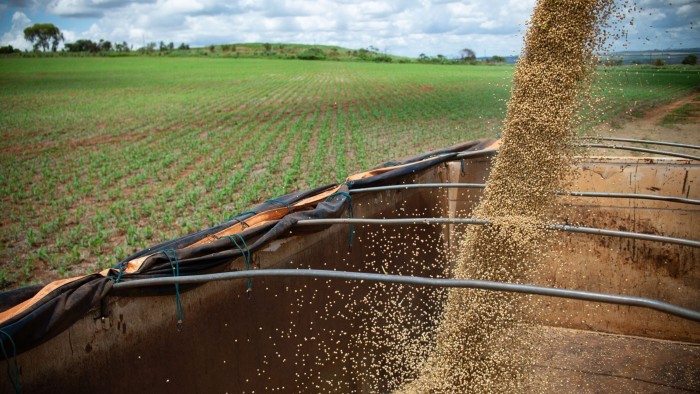
Roula Khalaf, Editor of the FT, selects her favourite stories in this weekly newsletter.
Mauro Mendes frowns when asked about illegal deforestation. It is a sensitive topic for the governor of Mato Grosso, Brazil’s agricultural powerhouse state. “The environmental image in Brazil is being deteriorated due to the actions, I would say, of less than 1 per cent [of farmers],” he says.
Mendes’s state is Brazil’s top producer of soya — today the country’s most valuable agricultural export, but one that is often seen as an environmental villain.
Few plants divide opinion in Brazil as much as soya, of which the country is the world’s largest producer and exporter. For farmers, the crop has revolutionised agriculture and brought prosperity to the country’s vast interior — thanks in large part to buyer in China, where 70 per cent of exports go. But, for environmentalists, soyabeans are synonymous with deforestation and displacement of traditional communities.
This year, even as deforestation has fallen in the Amazon rainforest, it has hit record levels in the Cerrado region, a tropical savannah and vital carbon sink that is now home to 22mn hectares of soy plantations — half of the country’s total.
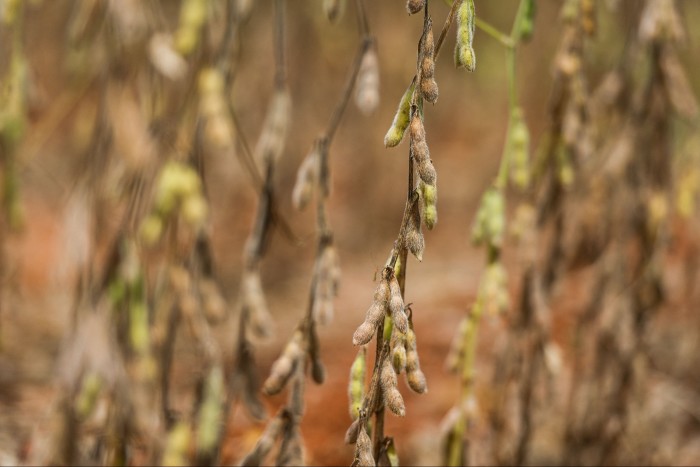
Eduardo Assad, a professor at the Getulio Vargas Foundation (FGV), a think-tank and university, says: “The way it is produced today, it is not sustainable, because it demands large extensions of land. In many cases, it demands deforestation.”
At the same time, though, Assad acknowledges that “there really is no cheaper form of protein” and the bean is “far less perishable” than others.
International bodies, such as the UN’s Food and Agriculture Organization, have also stressed the crop’s importance for food security, with the world’s population projected to swell to 9.7bn by 2050. Soya “plays a crucial role”, according to the FAO’s Brazil office, although it also notes “the challenge of producing it in a more innovative and sustainable way”.
Now, a series of initiatives in Brazil is trying to rise to that challenge: to improve soya’s environmental credentials, so that it can be grown in a way that will satisfy both farmers and green campaigners.
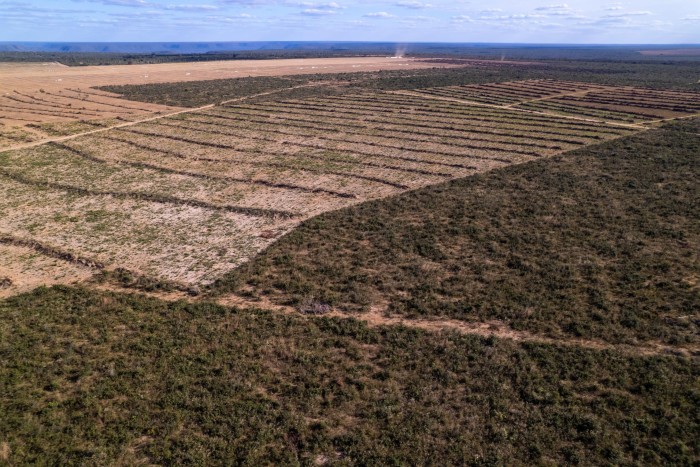
In a bid to stamp out illegal deforestation in the Cerrado, the country’s soyabean frontier, industry leaders — the Brazilian Association of Vegetable Oil Industries (Abiove, which represents traders) and the National Association of Cereal Exporters (Anec) — have launched a monitoring platform for the 2023-24 harvest.
Once operational, CSA Cerrado will survey soy cultivation in the region, using technology from Brazil’s National Institute for Space Research (Inpe) to identify land clearances. The aim is to create a similar system to the Amazon Soy Moratorium, a scheme set up in 2006 by commodities traders and environmental groups that has been credited with slowing Amazon deforestation.
CSA Cerrado will contact farmers who have cleared land since August 2020 and request authorisation documents. Those who cannot supply them will be deemed to have committed illegal deforestation, and buyers associated with Abiove and Anec will no longer acquire soyabeans from them, says Bernardo Pires, head of sustainability at Abiove.
“Together, the [Abiove and Anec member] companies make up a little more than 90 per cent of the soyabean purchasing power in Brazil,” he explains. “[Rogue farmers] would have a very restricted market.”
More importantly, farmers who want to return to the market will have to present a plan to restore an area equivalent to the land they have cleared.
However, Rosângela Corrêa, a professor at the University of Brasília and director-general of its Cerrado Museum, points out that much of the deforestation happening in the region is actually legal.
That is because the Cerrado has less stringent farming rules than the Amazon, where producers generally must keep 80 per cent of their properties forested. In the Cerrado, the figure is 20-35 per cent.
“The Cerrado has always been chosen to die in place of the Amazon,” Corrêa says.
Pires says that farmers “should be compensated” for preserving forested areas on their land. He also notes that farmers often wait “three or four” years to receive permits for clearing land, which can disadvantage them relative to competitors.
But, even aside from deforestation, soya is not carbon neutral: emissions of nitrous oxide — a potent greenhouse gas — from crop residues are also a particular problem.
To address it, Brazil’s state-run agricultural research institute, Embrapa, has embarked on a “low carbon soy” programme. Currently in its pilot phase, it will identify practices that minimise emissions and establish a certification scheme for farmers who adopt them.
“We are aware of the concerns regarding greenhouse gas emissions and issues relating to the sustainability of our soybean production systems,” says Marco Antonio Nogueira, a researcher at Embrapa’s soy department.
Meanwhile, “responsible” soyabean certification schemes, which enable farmers to charge premium prices for engaging in more sustainable practices, are being expanded in Brazil.
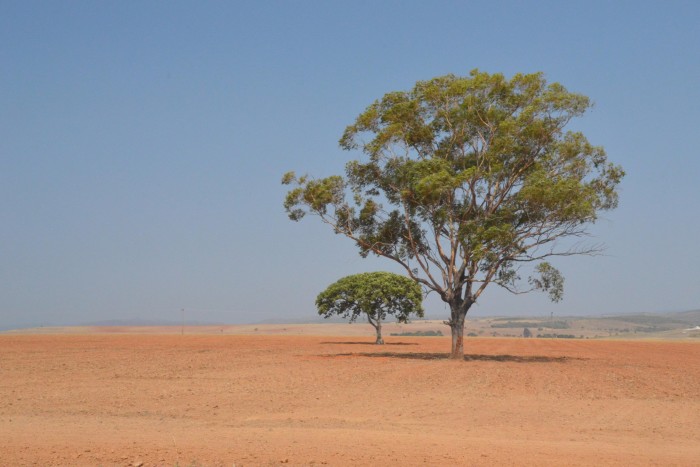
The Round Table on Responsible Soy Association, a non-profit based in Zurich, says it hopes to increase the volume of certified Brazilian soy by 5 per cent this year, from 5.9mn tonnes in 2022.
Certification is awarded on the core principle of “zero deforestation” and “zero conversion”, meaning that even “legal” deforestation — with prior authorisation, as is often seen in the Cerrado — is forbidden.
Farmers must adhere to best environmental practice, such as using biofuels and soil preservation techniques, and must maintain fair and responsible relationships with labourers and local communities. Accredited third parties carry out audits.
However, given total annual production of soya in Brazil is 155mn tonnes, based on the 2022-23 harvest, the Round Table certification efforts have a long way to go.
Assad from FGV points out that, though soya is mostly used for fish and livestock feed, it is so lucrative that it is displacing Brazilian staples such as rice and beans, which are typically cheaper than the meat the soya is used to produce.
“Soy as a solution to food security depends on meat [prices] being accessible, which they are not,” he says. “But, since soy makes a lot of money, a lot of money in a short time, everyone has their eye on it.”
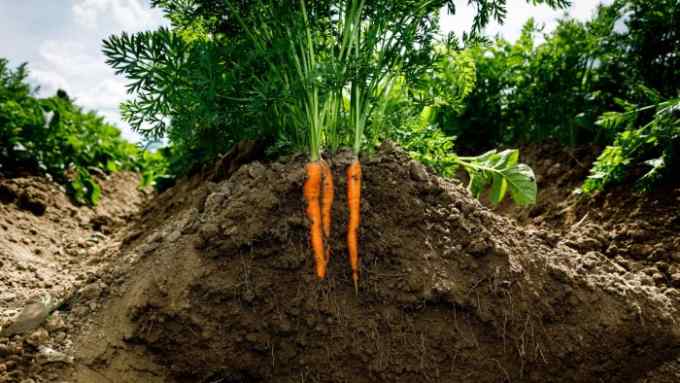
Comments